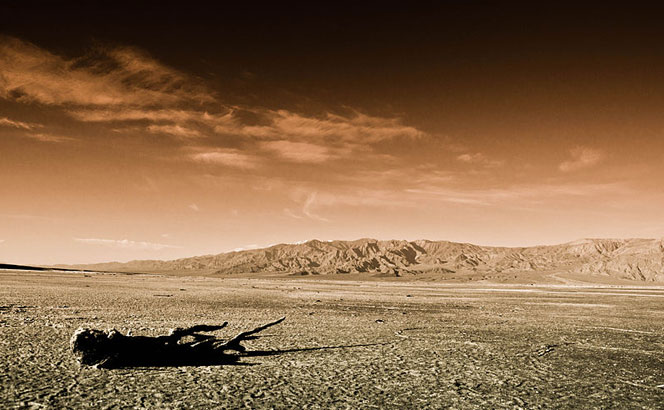
The findings, published in the journal Nature Climate Change, give scientists a better handle on the Earth’s carbon budget—how much carbon remains in the atmosphere as CO2, contributing to global warming, and how much gets stored in the land or ocean in other carbon-containing forms.
Obtaining the results required a novel 10-year experiment in which researchers exposed plots in the Mojave Desert to elevated carbon-dioxide levels similar to those expected in 2050. The researchers then removed soil and plants down to a meter deep and measured how much carbon was absorbed.
Derek Sonderegger, assistant professor of mathematics and statistics at Northern Arizona University, used his expertise to help analyze data drawn from the materials.
“This was an extremely expensive experiment to run so the sample sizes were small,” Sonderegger said. “The statistical work to get as much information as possible out of the data was pretty gnarly. Having a huge amount of data but very few replicates was exciting but difficult to deal with.”
The research addresses one of the big unknowns of global warming: the degree to which land-based ecosystems absorb or release carbon dioxide as it increases in the atmosphere.
Receiving less than 10 inches of rain a year, arid areas run in a wide band at 30 degrees north and south latitude. Along with semi-arid areas, which receive less than 20 inches of rain a year, they account for nearly half the Earth’s land surface.
Forest soils have more organic matter and, square foot for square foot, hold much more carbon. But because arid soils cover so much area, they can have an outsize role in the Earth’s carbon budget and in how much the Earth warms as heat-trapping gases accumulate in the atmosphere.
The idea for the experiment originated with scientists at Nevada’s universities in Reno and Las Vegas and the Desert Research Institute. R. Dave Evans, a Washington State University professor of biological sciences specializing in ecology and global change, was brought in for his expertise in nutrient cycling and deserts, while Sonderegger and researchers at the University of Idaho, Arizona State University and Colorado State University also contributed.



